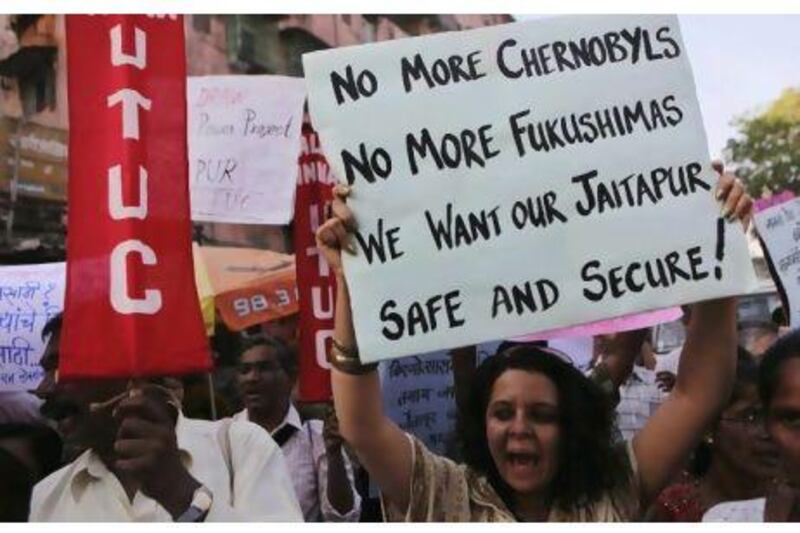NEW DELHI // India is re-examining the safety standards of its nuclear energy programme in light of Japan's struggles with the Fukushima Daiichi power plant, which was pushed towards meltdown by an earthquake and tsunami.
The country's prime minister, Manmohan Singh, said on Friday during a public event organised by India Today magazine: "The tragic nuclear incidents in Japan make us revisit strategies for nuclear safety. I have already ordered a thorough [safety] review by the department of atomic energy,".
India has 22 nuclear reactors, which generate roughly 4,800 megawatts of energy. The government plans to increase this to nearly 64,000 megawatts by 2032 and wants to build at least 18 new reactors by 2020.
For India's economy to grow at a rate of eight per cent every year, it will need roughly 950,000 megawatts of power by 2030, according to an Energy Coordination Committee calculation published in 2006.
India cannot afford to rely solely on coal and oil to fulfil that requirement and is under international pressure to reduce its carbon emissions.
The review of the nuclear plants is scheduled to begin as soon as information is received from Fukushima on the strengths and weaknesses of Japan's reactors.
Similar reviews were conducted in India after the Chernobyl meltdown in the Soviet Union and the Three Mile Island meltdown in the United States.
India's existing nuclear plants are of varying vintages. The boiling water reactor in the town of Tarapur, in the state of Maharashtra, was built in 1969, two years before similar reactors were installed in the Fukushima plant.
The fourth unit of the Kaiga power plant in the state of Karnataka, on the other hand, came online in November 2010.
Some minor mishaps have already occurred at Indian nuclear power stations.
In plants at Tarapur, Kota in the state of Rajasthan, and Kalpakkam in Tamil Nadu, heavy-water leaks were reported in the 1990s. Near the Kaiga nuclear plant, drinking water tested positive for radiation contamination in tests conducted in November 2009.
In Jaitapur, in the state of Maharashtra, there is controversy over the design of six reactors in a plant that is designed to generate 9,900 megawatts of power when it becomes fully operational; a French firm, Areva, is overseeing the construction of the plant.
Opponents of the Jaitapur project have said the reactor - a so-called evolutionary pressurised model - is untested and dangerous. In addition, there has been a groundswell of opposition from the surrounding villages and towns.
Vaishali Patil, a Maharashtra-based activist whose organisation opposes the plant, said the issues deal with procedural matters: how the land on which the reactor was built was acquired, for example, and whether the villagers around Jaitapur were made aware of the particulars of the project.
The myriad dangers presented by the crippled nuclear complex in Japan, however, including reports of food and water contaminated by radiation, have not been lost on the people of Jaitapur, said Ms Patil.
"The people here have been continuously watching the news, because they know it's a life-and-death situation for them," she said.
"They're aware of what happened in Chernobyl and they're aware of the problems that the disposal of nuclear waste can pose."
Ms Patil also said that, according to data obtained under India's Right to Information act, 93 earthquakes were felt in the Jaitapur area during the past 15 years.
Dr R Rajaraman, a physicist who serves as the co-chairman of the International Panel on Fissile Materials, said that to call Areva's reactor "untested" was a misnomer.
"It's untested in the sense that it's new and it hasn't been running continuously anywhere for 10 years," he said.
"But it's built according to designs that have been thoroughly tested. It isn't as if they were building a fusion reactor tomorrow."





